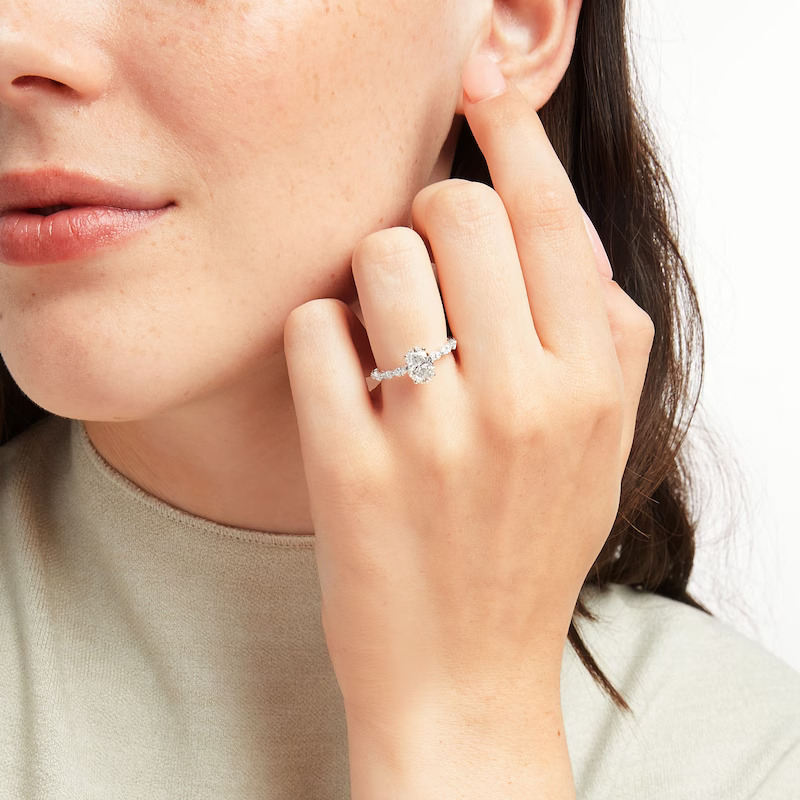
Oval engagement rings have long been admired for their unique blend of classic elegance and contemporary style. Their elongated shape offers a distinctive twist on the traditional round cut, making them a popular choice for brides-to-be around the world. But what makes oval engagement rings truly fascinating is how they are perceived and celebrated in different cultures. From their symbolic meanings to the unique designs found across the globe, understanding these cultural perspectives can help you make an informed and meaningful choice when purchasing an oval engagement ring.

Before diving into the cultural specifics, it’s essential to understand why oval engagement rings are so beloved. The oval cut diamond is known for its brilliance and fire, thanks to its numerous facets. Its elongated shape not only makes the stone appear larger but also has a slimming effect on the finger, making it a flattering choice for many.
In many cultures, the shape of the oval engagement ring itself carries symbolic meanings. The oval is often associated with rebirth, eternity, and a continuous journey, making it a fitting symbol for a lifelong commitment. This symbolism resonates globally, albeit with cultural variations.
In Western countries like the United States and Canada, oval engagement rings have surged in popularity due to their modern appeal and celebrity endorsements. Celebrities such as Blake Lively and Hailey Baldwin Bieber have sported stunning oval engagement rings, setting trends that many brides aspire to follow.
In these cultures, the emphasis is often on the diamond's quality and size. The 4 Cs—cut, color, clarity, and carat—are crucial factors in the decision-making process. Buyers in these regions tend to favor oval engagement rings with a high degree of brilliance and minimal inclusions.
In Europe, oval engagement rings are cherished for their sophistication and elegance. Countries like France and Italy, known for their rich history in jewelry craftsmanship, often feature oval rings in intricate settings. Vintage-inspired designs with filigree and milgrain detailing are particularly popular.
In the UK, the royal family’s influence cannot be understated. Princess Diana's famous sapphire engagement ring, now worn by Kate Middleton, has inspired many to choose colored gemstones in oval shapes, often surrounded by a halo of diamonds.
In India, engagement rings are deeply symbolic and are often part of elaborate wedding traditions. Oval engagement rings are appreciated for their unique shape and are sometimes paired with traditional Indian motifs.
Gold is a prevalent choice for the band, often intricately designed with engravings or additional gemstones. Indian culture places significant importance on astrological signs, and the choice of gemstones (like sapphires or emeralds) can be influenced by these beliefs.
In China, engagement rings symbolize commitment and future prosperity. Oval engagement rings are gaining popularity, particularly among younger generations who seek a blend of tradition and modernity.
The use of jade, a stone highly valued in Chinese culture, is sometimes incorporated alongside diamonds. An oval engagement ring featuring jade and diamonds can be seen as a bridge between traditional Chinese values and contemporary Western influences.
In the Middle East, luxury and opulence are often key in jewelry design. Oval engagement rings are no exception, frequently showcasing larger stones with high clarity and vibrant color.
Platinum and white gold are popular choices for the band, often adorned with intricate detailing that reflects the region's rich artistic heritage. The halo setting, which enhances the size and sparkle of the central oval diamond, is a favored design.
South Africa, known for its rich diamond mines, has a unique relationship with diamond engagement rings. Oval engagement rings here are valued for their brilliance and the way they highlight the quality of the local diamonds.
In South African culture, there is a growing trend towards ethically sourced and conflict-free diamonds. An oval engagement ring featuring such a diamond not only offers beauty but also aligns with the ethical values held by many modern couples.
When buying an oval engagement ring, it's crucial to understand the 4 Cs: cut, color, clarity, and carat. The cut of the oval diamond significantly affects its brilliance. Ensure the diamond has a good symmetry and proportion to avoid a 'bow-tie' effect, a shadow across the center of the stone.
Color and clarity are also important. Oval diamonds tend to show color more than round diamonds, so opting for a near-colorless grade (G-H) is advisable. Similarly, since the oval shape can highlight inclusions, choose a clarity grade of VS2 or higher for the best appearance.
The setting of the ring can greatly influence its overall look and durability. Prong settings are popular as they allow the diamond to catch the most light. However, bezel settings offer more protection by encircling the diamond with metal.
Consider personalizing the ring to reflect your unique style or cultural heritage. Adding side stones, choosing a two-tone band, or incorporating meaningful engravings can make your oval engagement ring truly one-of-a-kind.
Set a budget before you start shopping. Oval diamonds can appear larger than round diamonds of the same carat weight, offering a cost-effective way to maximize the ring's visual impact. Additionally, consider the metal and setting style, as these can also influence the overall price.
Oval engagement rings are a beautiful and versatile choice, celebrated across various cultures for their elegance and symbolism. Understanding the cultural significance and design preferences can help you select an oval engagement ring that not only meets your aesthetic desires but also resonates with deeper meanings and traditions. Whether you’re drawn to the modern appeal seen in Western cultures, the traditional influences in Asian designs, or the opulent styles of the Middle East, an oval engagement ring can be customized to reflect your unique love story. Happy shopping!